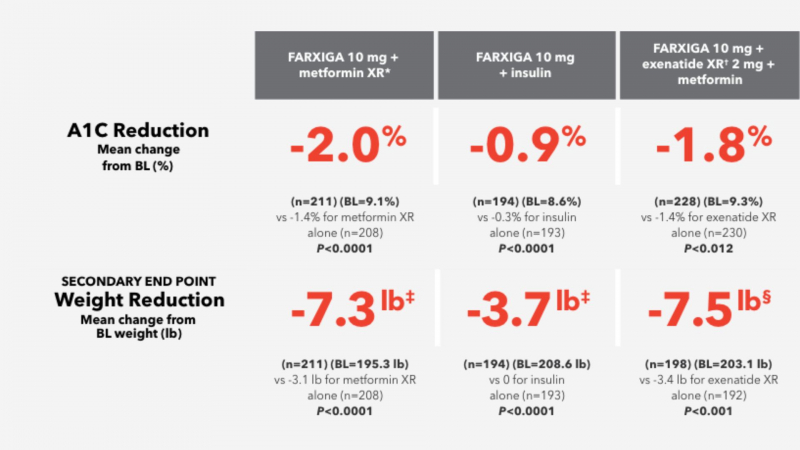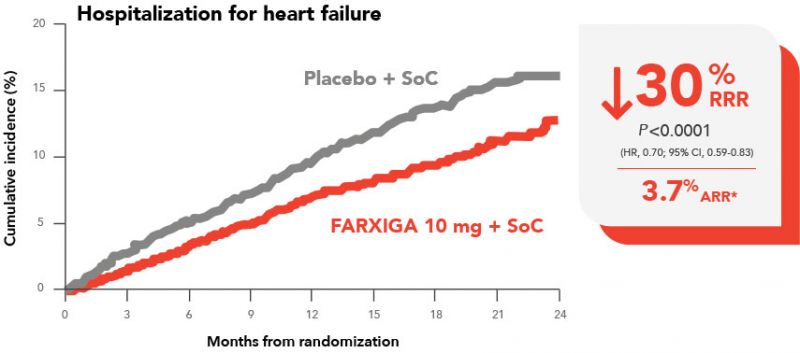Response and effectiveness

Farxiga causes an increase in glucose excretion in the urine very soon after the first dose. After 12 weeks of treatment, dapagliflozin doses of 5mg or 10mg per day resulted in an average of 70 grams of glucose per day excreted in the urine in patients with type 2 diabetes.
Farxiga reaches its peak concentration within two hours of administration. Although food can reduce Farxiga's peak concentration and lengthen the time it takes to reach maximum concentrations, these changes are not clinically significant, and Farxiga can be administered with or without food.
The average reduction in HbA1C from baseline for Farxiga 5mg and Farxiga 10mg after 24 weeks of treatment was 0.8 and 0.9, respectively. For Farxiga 5mg and 10mg, the reduction in fasting plasma glucose from the starting point was 24.1 and 28.8, respectively. Usually, a combination therapy increased response.
Farxiga significantly decreased the risk of the composite of worsening renal function, end-stage kidney disease, and cardiovascular or renal death by about 39% in the DAPA-CKD Phase III trial, which was carried out in patients with chronic kidney disease.








